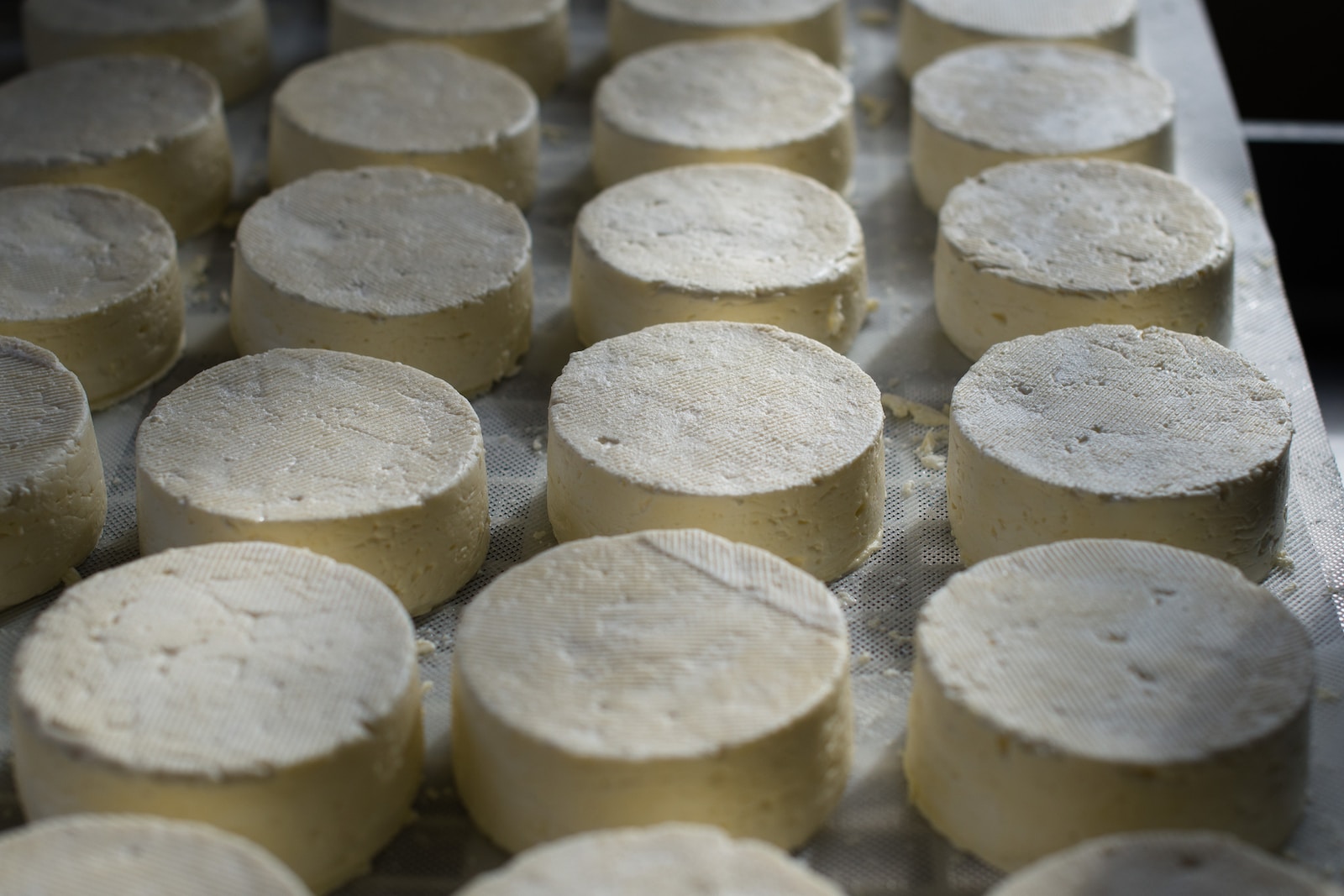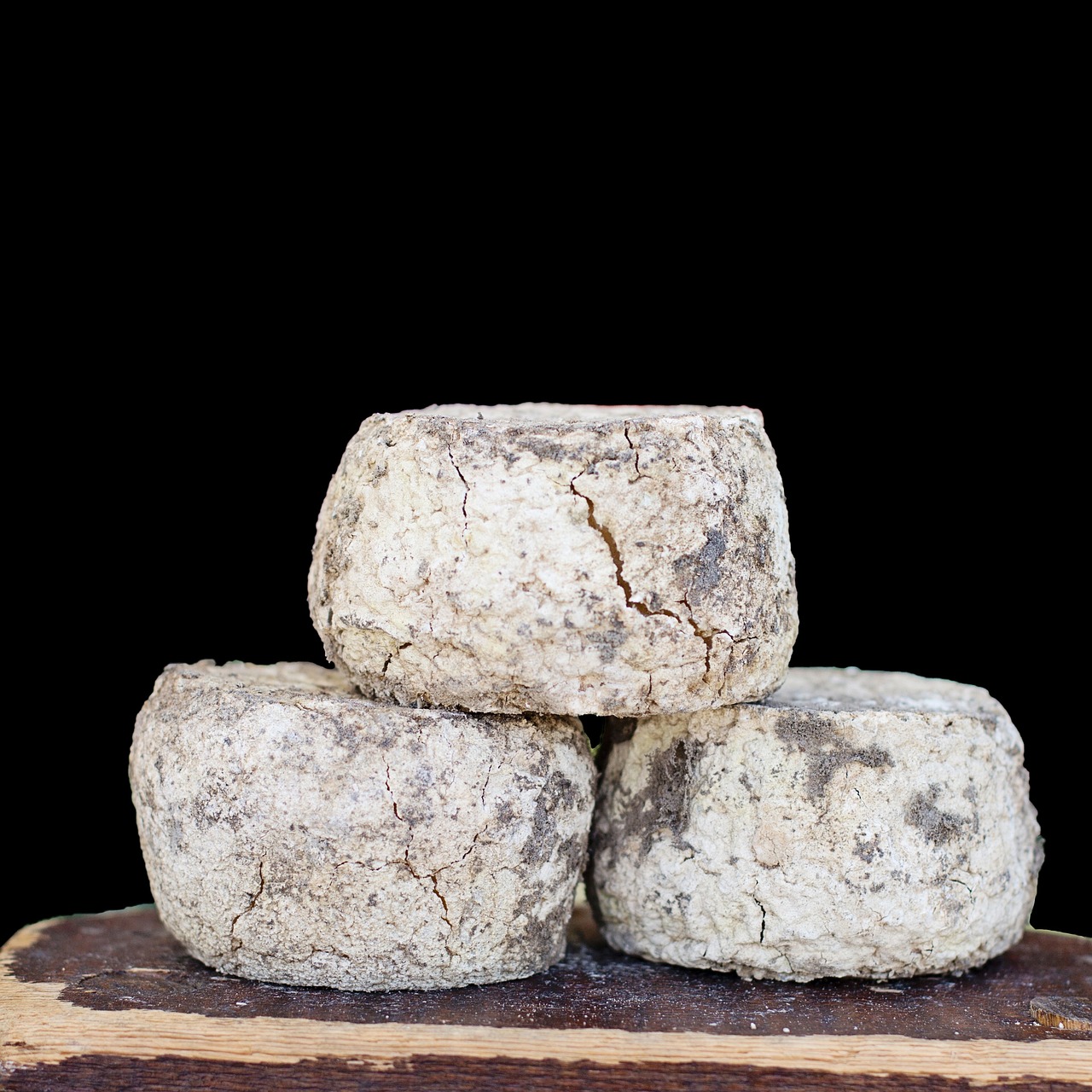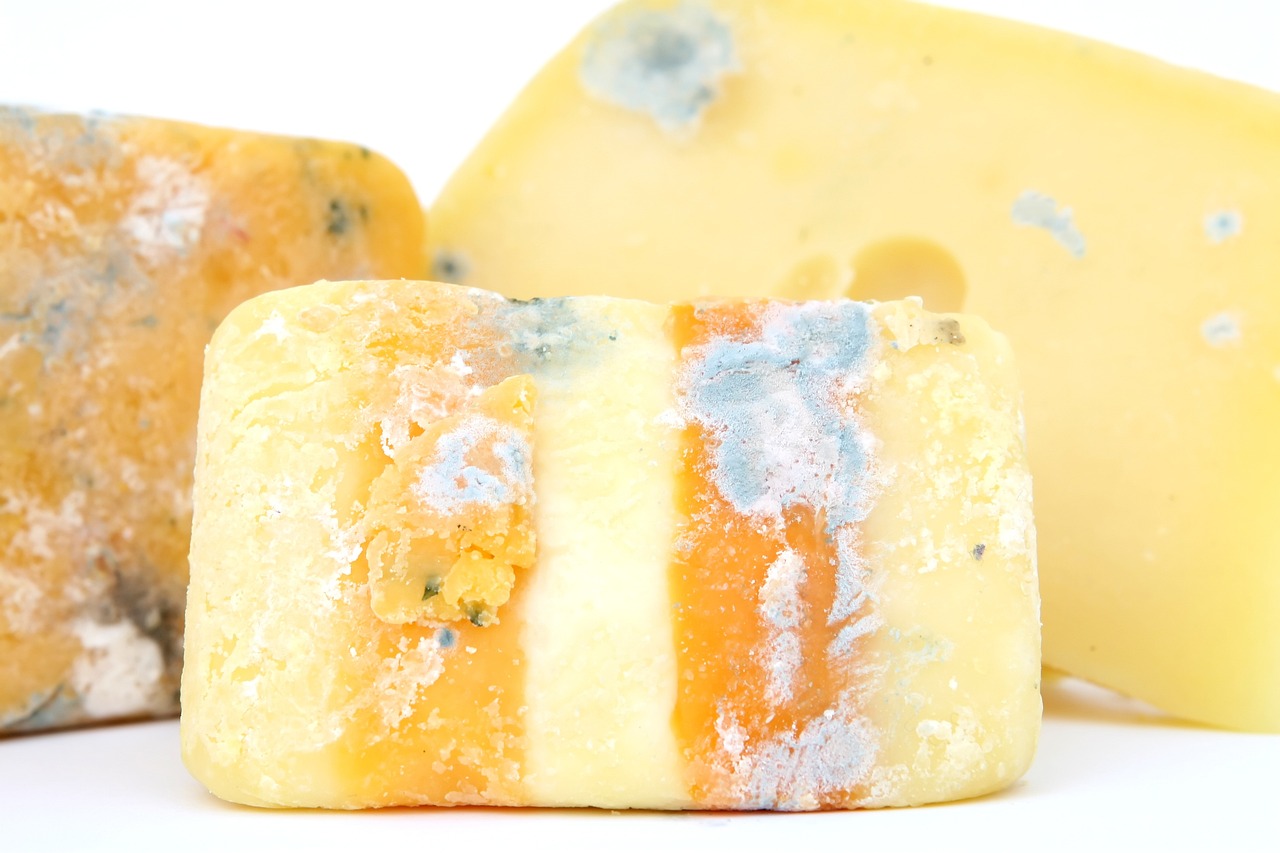
Brie is a soft, creamy cheese that is enjoyed all over the world. It is a popular choice for cheese boards, sandwiches, and even baked dishes. However, like any type of cheese, brie can go bad if it is not stored or handled properly. Knowing how to tell if brie is bad is important to avoid any potential health risks and to ensure that you are getting the best taste and quality from your cheese.
One of the first signs that brie is going bad is a change in its appearance. Fresh brie should have a smooth, white rind that is slightly fuzzy to the touch. If the rind starts to turn yellow or brown, or if it develops any cracks or spots, it may be a sign that the cheese is no longer fresh. Additionally, if the cheese starts to sag or become misshapen, this may be an indication that it is past its prime.
Another way to tell if brie is bad is to take a whiff of it. Fresh brie should have a mild, slightly nutty aroma. If the cheese starts to smell sour, pungent, or like ammonia, it may be spoiled. Similarly, if the cheese has a strong moldy smell, this may be a sign that it has been contaminated with harmful bacteria. If you notice any of these odors, it is best to err on the side of caution and discard the cheese.
Table of Contents
Understanding Brie Cheese

Brie cheese is one of the most popular soft cheeses in the world, originating from France. It is a type of soft cheese that is made from cow’s milk and has a white rind. Brie cheese is similar to Camembert, another popular soft cheese from France, but Brie is usually larger and has a milder taste.
Brie cheese is a versatile cheese that can be enjoyed in many ways. It can be eaten on its own, paired with crackers or bread, or used as an ingredient in dishes such as quiches, omelets, and sandwiches.
One of the key characteristics of Brie cheese is its soft texture. This is due to the fact that it is made from cow’s milk and has a high moisture content. The rind of Brie cheese is also an important part of its flavor and texture. It is edible and has a slightly nutty taste.
Soft cheeses like Brie are more perishable than hard cheeses, and they can spoil quickly if not stored properly. It is important to keep Brie cheese refrigerated and to consume it before the expiration date on the package.
In summary, Brie cheese is a popular soft cheese from France that is enjoyed around the world. It has a mild taste and a soft texture, and can be eaten on its own or used as an ingredient in many dishes. It is important to store Brie cheese properly and to consume it before it spoils.
How to Store Brie Cheese

Brie cheese is a soft, creamy cheese that is best enjoyed when it is fresh and at its peak. Proper storage is essential to ensure that the cheese stays fresh and does not spoil. Here are some tips on how to store brie cheese:
Refrigerate Brie Cheese
Brie cheese should always be stored in the refrigerator. The cool temperature of the fridge helps to slow down the growth of bacteria and mold, which can cause the cheese to spoil.
Use an Airtight Container
When storing brie cheese, it is important to use an airtight container. This will help to prevent the cheese from drying out and developing a hard rind. You can use a plastic container or wrap the cheese tightly in plastic wrap.
Store in the Cheese Drawer
If your refrigerator has a cheese drawer, this is the best place to store brie cheese. The drawer is designed to maintain a slightly higher humidity level, which helps to keep the cheese moist and fresh.
Keep Away from Strong Odors
Brie cheese has a delicate flavor and can easily absorb strong odors from other foods in the fridge. It is best to store the cheese in a separate container away from other strong-smelling foods.
Check the Shelf Life
Brie cheese has a relatively short shelf life and should be consumed within a few days of opening. Check the label on the cheese for the recommended storage time and expiration date.
By following these tips for storing brie cheese, you can ensure that your cheese stays fresh and delicious for as long as possible.
Packaging and Opening Brie

When it comes to determining whether brie cheese has gone bad or not, the packaging can provide some clues. Here are some things to keep in mind when dealing with different types of brie packaging:
Unopened Wheel
If you have an unopened wheel of brie, the packaging should be intact and free from any visible signs of damage. The plastic or wax paper should be tightly wrapped around the cheese, and there should be no signs of mold or discoloration. If the package is bloated or there is a strong odor coming from the cheese, it may be a sign that the cheese has gone bad.
Opened Package
If you have already opened the package, the cheese should be wrapped in plastic wrap or parchment paper to keep it fresh. Make sure that the wrapping is tightly sealed around the cheese to prevent air from getting in, which can cause the cheese to dry out and spoil faster.
Plastic Packaging
Some brie cheeses come in plastic packaging, which can make it difficult to tell if the cheese has gone bad. Look for any signs of mold or discoloration on the surface of the cheese, as well as any unusual odors. If the cheese looks or smells off, it is best to err on the side of caution and discard it.
Wax Paper and Aluminum Foil
Brie cheese can also come wrapped in wax paper or aluminum foil. If the cheese is wrapped in wax paper, make sure that the paper is tightly sealed around the cheese to prevent air from getting in. If the cheese is wrapped in aluminum foil, make sure that the foil is tightly wrapped around the cheese to prevent it from drying out.
Opening Brie
When opening brie cheese, use a clean knife to cut away any rind or mold on the surface of the cheese. Make sure to cut away enough of the cheese to ensure that you are not eating any spoiled or contaminated portions. If the cheese has a strong odor or unusual texture, it may be a sign that it has gone bad and should be discarded.
By paying attention to the packaging and taking care when opening brie cheese, you can help ensure that you are consuming fresh and delicious cheese every time.
Recognizing Spoilage Signs

When it comes to recognizing spoilage signs in brie, there are a few things to look out for. Texture is an important factor to consider when determining if brie has gone bad. If the cheese is too soft or too hard, it may be a sign that it has spoiled. Mold is another indicator of spoilage, especially if it is green or blue in color.
A strong or unpleasant smell, such as an ammonia odor, is another sign that brie has gone bad. The appearance of the cheese can also provide clues to its freshness. A moldy exterior or gray, flaky spots are both signs that the cheese has spoiled.
Moisture is another factor to consider when determining if brie is bad. If the cheese is overly moist, it may be a sign that it has spoiled. Similarly, if the cheese has a sour or unpleasant smell, it is likely that it has gone bad.
In summary, there are several spoilage signs to look out for when determining if brie is bad. These include texture, mold, strong or unpleasant smells, appearance, moisture, and sourness. If any of these signs are present, it is best to discard the cheese to avoid any potential health risks.
Effects of Temperature on Brie
Brie cheese is a soft cheese that is known for its creamy texture and nutty flavor. It is a popular cheese that can be enjoyed on its own or used as an ingredient in many recipes. However, it is important to store brie cheese properly to ensure its freshness and quality. Temperature is a crucial factor that can affect the quality of brie cheese.
Room Temperature
Brie cheese should be stored at room temperature for a short period of time, usually no more than two hours. This is because brie cheese can spoil quickly at room temperature, especially in warm and humid environments. If brie cheese is left at room temperature for too long, it can become dry, hard, and develop an unpleasant odor.
Refrigerate
The best way to store brie cheese is to refrigerate it. Brie cheese should be stored in the refrigerator at a temperature between 35°F and 45°F. This will help to maintain its freshness and quality. It is important to keep brie cheese in its original packaging or wrap it tightly in plastic wrap to prevent it from drying out. If stored properly, brie cheese can last up to two weeks in the refrigerator.
Freezing
Brie cheese can be frozen, but it is not recommended. Freezing can cause the cheese to lose its texture and flavor. If brie cheese is frozen, it should be used within one month of freezing. When freezing brie cheese, it is important to wrap it tightly in plastic wrap or aluminum foil to prevent freezer burn.
Thawing
When thawing frozen brie cheese, it should be done slowly in the refrigerator. This will help to maintain the texture and flavor of the cheese. Brie cheese should never be thawed at room temperature or in the microwave as this can cause it to spoil quickly.
In summary, temperature is a crucial factor that can affect the quality of brie cheese. Room temperature can cause the cheese to spoil quickly, while refrigeration is the best way to store brie cheese. Freezing is not recommended, but if done properly, brie cheese can be frozen for up to one month. Thawing should be done slowly in the refrigerator to maintain the texture and flavor of the cheese.
Taste and Texture of Brie
Brie is known for its creamy texture and rich, buttery taste. When it is fresh, the cheese should have a mild, slightly earthy flavor with a soft and velvety texture. As it ages, the flavor becomes more pronounced and the texture becomes runnier.
One way to tell if brie is bad is to pay attention to its taste and texture. If the cheese has a strong, unpleasant flavor or a gritty texture, it may be past its prime. Additionally, if the cheese has a sour or ammonia-like taste, it is a sign that it has gone bad.
It is important to note that brie is a soft cheese and can change in flavor and texture quickly. If the cheese has been left out at room temperature for an extended period of time, it may start to spoil. To prevent this, it is recommended to store brie in the refrigerator and consume it within a few days of purchasing.
In summary, when tasting brie, look for a creamy texture and a mild, slightly earthy flavor. If the cheese has a strong, unpleasant taste or a gritty texture, it may be bad. Always store brie in the refrigerator and consume it within a few days of purchasing to ensure its freshness.
Using Brie in Recipes
Brie is a versatile cheese that can be used in a variety of recipes. Here are some ideas for incorporating brie into your cooking:
- Slices: Brie can be sliced and served on its own or as part of a cheese platter. It pairs well with crackers, bread, and fruit.
- Baked: Brie can be baked in the oven, either on its own or in a pastry crust. This makes a great appetizer for parties or a delicious snack for a cozy night in.
- Cream Cheese: Brie can be used as a substitute for cream cheese in many recipes, such as in dips, spreads, and frosting.
- Feta: Brie can be combined with feta to make a delicious salad topping or sandwich filling.
- Charcuterie: Brie is a classic addition to any charcuterie board. Pair it with cured meats and other cheeses for a delicious snack or appetizer.
- Honey: Brie pairs well with honey, making it a great addition to a cheese plate or a topping for crostini.
- Cooked: Brie can be melted and used as a topping for burgers, pizzas, or grilled cheese sandwiches.
- Quiche: Brie can be used in quiches, adding a creamy and rich flavor to the dish.
- Brie en Croute: Brie en croute is a popular appetizer that involves wrapping brie in pastry dough and baking it until golden brown.
- Grilled Cheese Sandwich: Brie can be used in a grilled cheese sandwich, either on its own or paired with other cheeses.
- Ricotta Cheese: Brie can be combined with ricotta cheese to make a delicious filling for stuffed pasta dishes.
When using brie in recipes, it’s important to pay attention to its freshness. If the brie has a strong odor or mold on the rind, it may be past its prime and should not be used.
Frequently Asked Questions
When it comes to brie cheese, there are a lot of questions that people often ask. Here are some frequently asked questions about brie cheese:
How long does brie cheese last?
Brie cheese can last for several weeks if it is stored properly. If it is a fresh brie cheese, it should be consumed within a week or two of purchase. However, if it is a mature brie cheese, it can last for up to four weeks. It is important to note that the expiration date on the package is just a guideline, and the cheese may still be good for several days after that date.
What is the best way to store brie cheese?
Brie cheese should be stored in the refrigerator. It should be wrapped in wax paper or parchment paper to allow it to breathe. Plastic wrap can cause the cheese to sweat and can lead to mold growth. Once the cheese has been opened, it should be consumed within a few days.
How can you tell if brie cheese is bad?
There are a few signs that brie cheese may be bad. If the cheese has a strong ammonia smell, it is likely spoiled. If there is mold growing on the cheese, it should not be consumed. Additionally, if the cheese is slimy or has a sour taste, it is likely bad.
Can you eat leftovers that contain brie cheese?
If brie cheese has been used in a dish and then refrigerated, it should be consumed within a few days. However, if the cheese has been left out at room temperature for more than two hours, it should be discarded.
What is the difference between a “best-by” date and an expiration date?
A “best-by” date is a suggestion for when the cheese will taste its best. It does not necessarily mean that the cheese is bad after that date. An expiration date, on the other hand, means that the cheese should not be consumed after that date.
Overall, it is important to use your senses when determining if brie cheese is bad. If it smells bad, looks bad, or tastes bad, it is likely spoiled and should not be consumed.